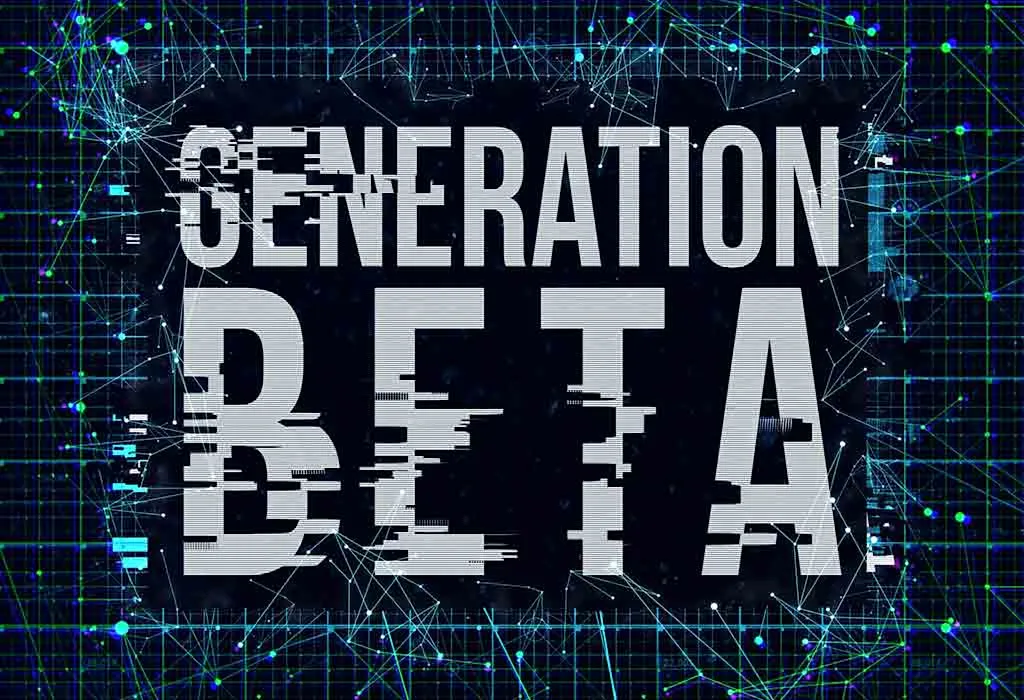A Guide to Generation Names by Years: Gen Z, Gen X, Millennial, and More
Even scratched your head wondering about the difference among Millennials, Gen Z, and Boomers? These generational buzzwords are more than just nomenclatures; they are a window to shared experiences and traits of people in certain periods. Every year, we hear about them, but every time, the timeline is different. Since deciphering the exact timeline of each period is quite a task, there isn’t a clear indication of where one generation begins and the other ends. However, there are estimates that most demographers and historians agree on. Let’s check out the breakdown of generation names and years to characterise each generation and learn about what shaped the older generation and what it does today.
What Are Generation Names & How Are They Determined?
Generational names are the nomenclatures used to describe groups of people born during specific periods. These labels help identify the historical, cultural, and societal trends that shape each generation.
Generations are usually established within a 20-year time period based on when one is born and when they have children. With changing demographics and an increase in fertility periods, that time span has gone long to define a generation. They are also influenced by pivotal moments, such as wars, economic shifts, and technological breakthroughs. For example, the Great Depression shaped the Silent Generation’s prudence and carefulness, whereas the internet revolution encouraged Millennials to find tech solutions to various existing problems.
There isn’t one rule to establish a generation, so researchers, sociologists, and historians define generations based on major historical events, societal patterns, and technological shifts. Today, however, the sociological way of defining a generation span is 15 years, which helps the timeframe stay organised and plan for future ones accurately.
Why Generational Labels Matter?
Understanding generational analysis and labels is pivotal in the research, academic, and business world. While it helps the academic world understand the characteristics, the business world benefits greatly by tailoring marketing strategies and workplace management. Ensuring a dynamic workplace enables leaders to understand and lead people more effectively.
The generational mix-up is everywhere in families, communities, and workplaces. Understanding the key nuances of each generation helps us understand their traits and why they behave a certain way differently than other generations.
Different Generations by Their Birth Year
While there is no clear line of understanding where the generation period ends and where it begins, there is some research that offers an approximate timeline for generations by year of birth. Below, we present the generations chart, based on the birth year along with the current ages.
Note: The following characterisation of generations is based on the analysis by the Pew Research Center and the one generation defined by the U.S. Census Bureau (Baby Boomers) (1) (2) (3).
| Generation | Birth | Current Age |
| Gen Z | 1997 – 2012 | 13 – 28 |
| Millennials or Generation Y | 1981 – 1996 | 29 – 44 |
| Generation X | 1965 – 1980 | 45 – 60 |
| Boomers II (a/k/a Generation Jones)* | 1955 – 1964 | 61 – 70 |
| Boomers I* | 1946 – 1954 | 71 – 79 |
| Post-War (The Silent Generation) | 1928 – 1945 | 80 – 97 |
| WWII | 1922 – 1927 | 98 – 103 |
Defining Generations and Their Time Periods
Usually, generations are grouped by a 20-year time interval based on the primary reproductive years of the parents, which is from age 18 to 38. below is a detailed guide on all generations in order.
The Greatest Generation (GI Generation): Born 1901–1927
The Greatest Generation, or GI Generation, experienced major historical turbulence. It lived through the Great Depression (experienced the worst of economic times) and then saw the deadliest war in history – World War II. But that isn’t all; it is also the time of jazz and swing music and the oh-so-bold cultural tastes of the era. Due to a slowdown in the economy, mitigation, and several write-offs, raising a family was filled with challenges, which gave birth to parenting traits like hard work, discipline, and resilience (4).
The Silent Generation: Born 1928–1945
Born during the times of the Great Depression (1929-1931) and the following World War II era (1939-1945), this generation earned its name ‘the Silent Generation’ due to its conformist and reserved nature as well as being silent and ignorant through the MacCarthy era (5). Due to the severe global economic downturn from the Great Depression and substantial inflation, debt, and a decline in the labour force due to WWII, this generation valued hard work, resilience, loyalty, and a strong work ethic.
McCarthyism was influential in this generation when people were silent about the fear of Communism around the country and not raising their voices (6). People of this generation allowed events to shape their lives.
Contradictory to the GI Generation, which valued grit and perseverance, the Silent Generation was strict towards parenting and respected authority over gusto. They steered clear of causing disruption and preferred minimal conflicts in their work environment.
Baby Boom Generation: Born 1946–1964
‘OK Boomer’ is a pretty common connotation that revolves around this generational group. When the war ended, people from the greatest and the silent generation started having babies, which significantly increased the population. People started prioritising families. Because of the boom or significant increase in the population after the war, such children born were called ‘the baby boomers’ or ‘boomers.’
This generation may seem out of touch or boring, but it had fascinating experiences. Baby boomers were quite different and radical than their parents, redefining parenting from their kids’ perspectives and bringing the concept of ‘family meetings.’
What’s more? Boomers were also the ones who actively protested the Vietnam War, started the hippie culture, and invented the phenomenon of the ‘Summer of Love.’
Besides having a strong work ethic, Boomers were more creative, goal-oriented, and more competitive than their previous generations, ultimately creating some of the most influential business empires that exist today.
No longer young, many baby boomers today may come out as pessimistic not just about the finances but about the development and everything else as they believe it is harder to make progress (7).
Generation X: Born 1965-1980
Often referred to as “slackers,” Generation X are the children of the boomer generation that lived through the MTV culture, the AIDS pandemic, and political upheaval. Due to their robust gusto, Gen X was instrumental in giving rise to LGBTQ+ rights.
Unlike the Boomer parents, Gen X parents were the first ones to adopt helicopter parenting styles and let their children play outside until the streetlights went on to often micromanage their children and be involved in their social and educational development. Generation X parents allowed their children to do their own thing and themselves gave priority to their own independence and work-life balance.
Generation X has a short generational length and loves to take lavish vacations, dress modestly, and work on their terms.
Millennial Generation or Generation Y: Born 1981–1996
The first generation to have a childhood with and without the internet, live through the 9/11 attack, and remember the e-commerce giant Amazon sold only books, the Millennial Generation or Generation Y has had an exemplary experience.
This is an amazing generation that experienced a childhood before computers, smartphones, and the internet, as well as after it took over the world.
While older generations consider Millennials or Gen Y to be impatient, self-centred, and narcissistic, the reality is quite different. Millennials as individuals are positive toward technological advancements, community-oriented, independent, environmentally conscious, and freer souls, respecting their selves (8).
Millennials, as parents, tend to be open-minded and prefer minimal punishment and more of an understandable approach toward children. They are more likely to encourage their children to be independent, their authentic selves, and express freely with regard to gender and sexuality.
Additionally, Millennials prioritise hobbies, travel, and family along with work. Compared to previous generations, Millennials do not have similar work preferences. Many prefer to venture out and explore new work options outside of the commonly designated professions.
Generation Z or iGen: Born 1997–2010
Generation Z is born in the age of smartphones, tablets, smart TVs, Xboxes, and the worldwide internet. Surprisingly, Gen Z is also the shortest generation and is also referred to as the iGen because of their consciousness and love for the Apple Corporation’s products.
Gen Zers are extremely aware of their environment and politics despite many being under the voting age. This tech-savvy generation is deeply connected through social media and is known for its inclusivity, diversity (due to worldwide connectivity), and activism, often advocating for climate action and social justice (9).
Primarily valuing communication and authenticity, Gen Z prioritises self-care and self-love and often shows mature reactions towards situations despite their age. They are well aware of the concepts of “equality” and “inclusion” and warmly welcome the LGBTQ+ revolution.
Generation Alpha: Born 2010-2024
Surrounded by AI, IoT, and instant global connectivity, Generation Alpha is the youngest generation of all. They are more tech-savvy and adaptable than their previous generation despite their ages, which will certainly prove influential in the future.
On the contrary, Gen Alpha may experience behavioural issues like reduced attention spans (like ADHD) and fewer in-person connections due to the reliability on technology. This generation also seems to prefer playing with technology rather than going outside for play and engaging in physical activity, which may take a toll on their health in the future.
We also know that this generation was born during the monumental COVID-19 pandemic and is more likely to prefer a single-parent household.
Also Read: Generation Alpha Characteristics and Parenting Tips
Generation Beta: Born 2025-2039
Gen Beta kids are born in 2025 and are predicted to be super tech-savvy, adaptable, sustainable, and socially conscious. Moreover, climate crisis, mental health, and global conflicts will be at the forefront of Generation Beta’s lives. While it’s too soon to determine the characters of Generation Beta, they will certainly be independent, creative, and technologically integrated group of people.
Also Read:
Parenting Tips for Raising Generation Beta Kids
Trendy Indian Names For Gen-Beta Boys and Girls
Modern Baby Names for Gen Beta Boys & Girls
The Importance of Understanding Generations as a Parent
Understanding generations and generational types is essential for parents to understand the differences in values, ways of thinking, communication styles, intergenerational learning, and belief systems that transverse between generations. This understanding helps parents establish robust relationships with their children and adopt measures to strengthen them.
FAQs
1. Who decides generational names and timelines?
Researchers, historians, and sociologists survey cultural events and technological shifts to analyse the timelines and names of generations.
2. Why are generational names important?
Generational timelines and types are essential in analysing cultural and societal trends, ultimately fostering empathy and cohesion among communities.
3. Are generational characteristics stereotypical or accurate?
It is important to understand that every individual is different and unique in their own way. When an individual is clubbed within a certain generational age, it increases the possibility of stereotypes due to trends and events at that particular time, which tend to oversimplify the characteristics of individuals. Thus, the likeliness of accuracy and stereotypes co-exist.
4. What is the most current generation that is old enough to understand social and political changes?
Gen Z age range is from 1997 to 2010, which is young enough to be politically and societally aware. Although most are in their teens and some are even younger – under the voting age, the wealth of information children of this generation possess is vast (10).
By looking at the times and experiences shared by different generations, we can assess the characteristics, see the reasons for the difference in behaviours and responses, foster empathy, and appreciate the uniqueness that comes with each generation rather than pointing out the gaps. With every year, there will be an evident change in the behaviour and mindset of people, often seemingly opposite to the previous generation, which leads to exhilarating inter-societal dynamics. Rather than noticing the differences, we can focus on the exoticness and strength of each generation, embrace it, and work towards a unified society. Parents, on the other hand, can educate themselves and guide their children through life with new exposures.
References/Resources:
1. Dimock. M; Defining generations: Where Millennials end and Generation Z begins; Pew Research Center; https://www.pewresearch.org/short-reads/2019/01/17/where-millennials-end-and-generation-z-begins/; January 2019
2. Colby. S. L, Ortman, J. M; The Baby Boom Cohort in the United States: 2012 to 2060; Beresford Research; https://www.beresfordresearch.com/wp-content/uploads/2022/04/US-Census-The-Baby-Boom-Cohort-in-US-2012-to-2060.pdf; May 2014
3. Age Range by Generation; Beresford Research; https://www.beresfordresearch.com/age-range-by-generation/
4. Ensign. A; The Greatest Generation: Birth Years, Characteristics, and History; FamilySearch; https://www.familysearch.org/en/blog/greatest-generation-years-characteristics; June 2020
5. The silent generation; The British Psychological Society; https://www.bps.org.uk/psychologist/silent-generation; April 2024
6. McCarthyism / The “Red Scare”; Dwight D. Eisenhower Presidential Library and Museum; https://www.eisenhowerlibrary.gov/research/online-documents/mccarthyism-red-scare
7. Baby Boomers: The Gloomiest Generation; Pew Research Center; https://www.pewresearch.org/social-trends/2008/06/25/baby-boomers-the-gloomiest-generation/; June 2008
8. Lee. Y, Circella. G; Chapter Five – ICT, millennials’ lifestyles and travel choices; Advances in Transport Policy and Planning, Volume 3, Pages 107-14; https://www.sciencedirect.com/science/article/abs/pii/S2543000919300113; 2019
9. Parker. K, Igielnik. R; On the Cusp of Adulthood and Facing an Uncertain Future: What We Know About Gen Z So Far; Pew Research Center; https://www.pewresearch.org/social-trends/2020/05/14/on-the-cusp-of-adulthood-and-facing-an-uncertain-future-what-we-know-about-gen-z-so-far/; May 2020
10. Dimock. M; Defining generations: Where Millennials end and Generation Z begins; Pew Research Center; https://www.pewresearch.org/short-reads/2019/01/17/where-millennials-end-and-generation-z-begins/; January 2019
Also Read:
Sandwich Generations
Effective Ways to Improve Your Parenting Skills
Tips to Fill The Generation Gap Between Parent and Child
Was This Article Helpful?
Parenting is a huge responsibility, for you as a caregiver, but also for us as a parenting content platform. We understand that and take our responsibility of creating credible content seriously. FirstCry Parenting articles are written and published only after extensive research using factually sound references to deliver quality content that is accurate, validated by experts, and completely reliable. To understand how we go about creating content that is credible, read our editorial policy here.































